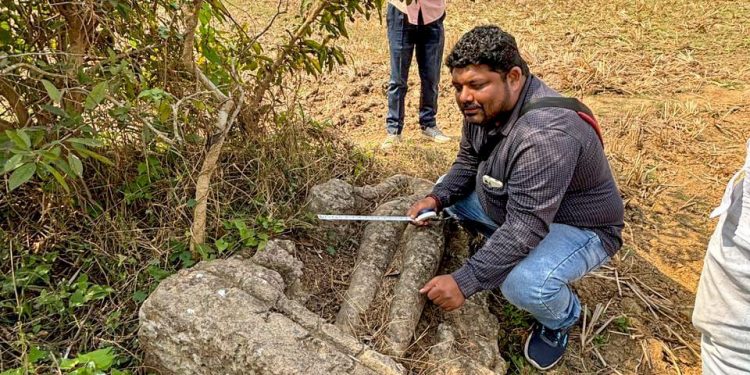The ruins of a Buddhist site have been found close to Ganeswarapur hamlet in Tangi Tehsil of the Cuttack district, according to the Odisha Chapter of the Indian National Trust For Art & Cultural Heritage (INTACH).
Scattered Buddhist archaeological relics were discovered at the site, which was located at the far end of the town, next to a tiny mound inside a rice field. Anil Dhir, Ritu Pattanaik, Suman Prakash Swain, Deepak Kumar Nayak, and Dr. Biswajit Mohanty made up the five-person crew that first surveyed the archaeological remains discovered at the location. The Birupa embankment is about 150 metres from the location.
Many Buddhist sites may be seen dotting both banks of the Birupa River’s ancient and current floodplains. An noteworthy find was the enormous headless Abalokiteswar picture that was found lying on the ground next to a tiny grassy mound surrounded by woods, measuring approximately six feet in height. The iconography closely resembles the Abalokiteswar figures seen in the adjacent Buddhist sites of Ratnagiri, Udayagiri, and Lalitgiri, despite the absence of the head. The people worship the pictures of the excavated Buddhist stupa across the river in the adjoining village of Rameswar as Hanumancheswara Mahadev, according to Deepak Kumar Nayak, Co-convenor of INTACH’s Cuttack Chapter.
This finding provides more evidence that Buddhism was widely practiced in the area in the past. Anil Dhir, the researcher, stated that although an exact era cannot be determined without a comprehensive archaeological excavation, it may be roughly attributed to a date before the 9th century CE by comparing the shattered Abalokiteswar picture with similar images found at other locations.
Because of the Birupa’s regular floods, the enormous pictures within a Buddhist Stupa or temple were buried beneath silt. The defaced pictures that are lying there and at a little shrine a little distance away are further proof of the devastation caused by iconoclastic invaders during the Afghan-Mughal era. According to local legend, the Kalapahada barbarian invasion in the sixteenth century CE also destroyed Tareswara Temple and Panchupandava Temple, the other two temples in the area, noted Dr. Biswajit Mohanty.
There may be a temple or stupa buried in the mound based on the remnants of a temple base and several strangely shaped kiln-baked bricks. A significant amount of shattered potsherds, including both Red and Blackware, were also found by the crew. The Cuttack Chapter Convener, Gopal Behera, is requesting in writing that specialists be dispatched to the site for more in-depth studies from the ASI, the State Archaeology Department, and the Culture Directorate.

